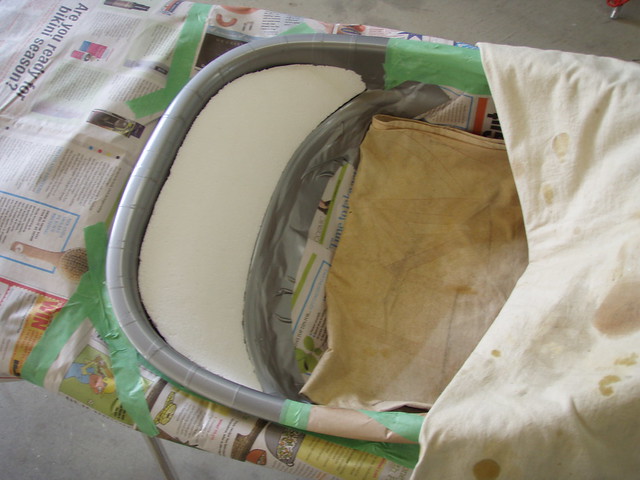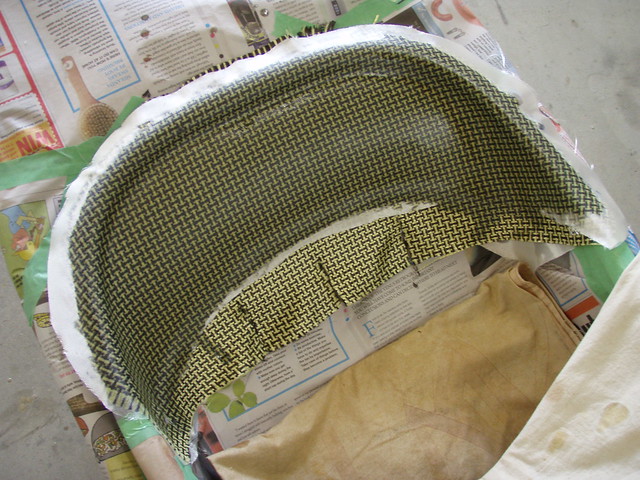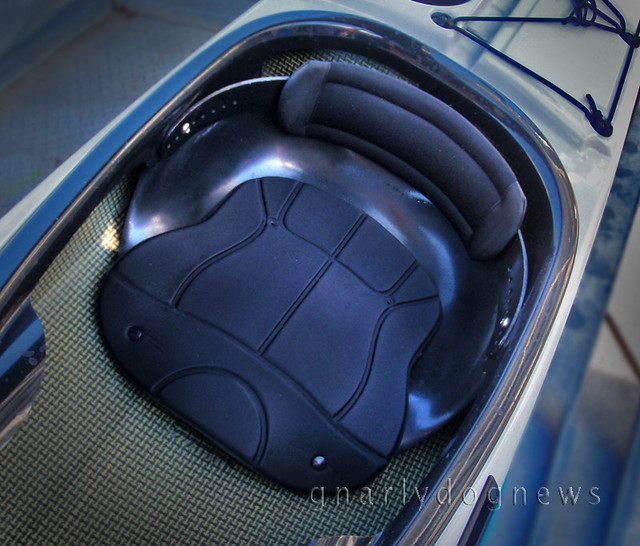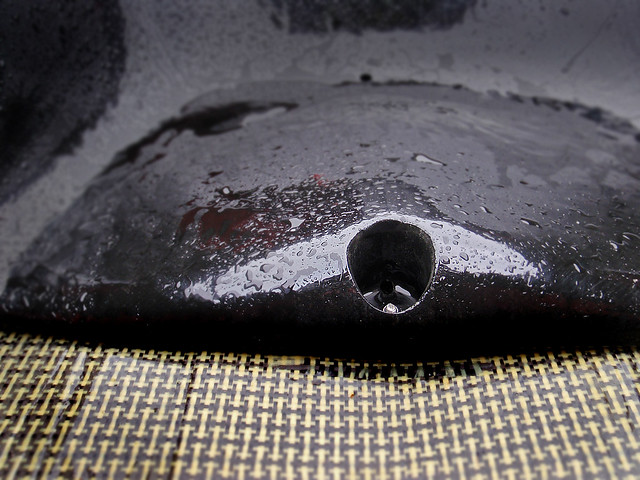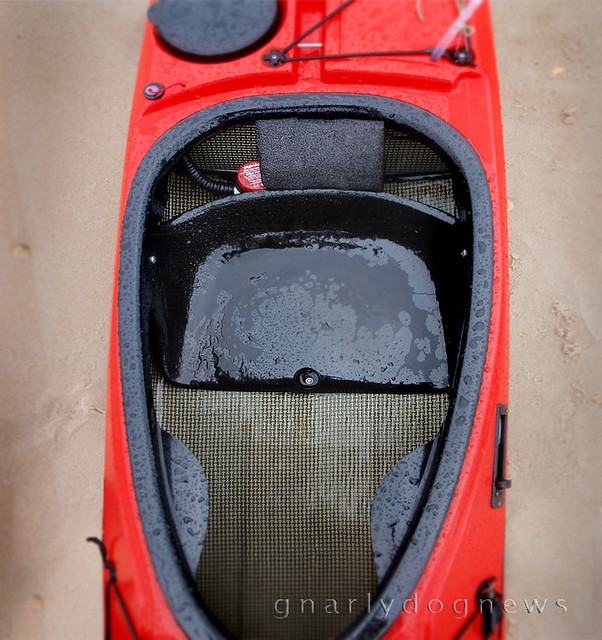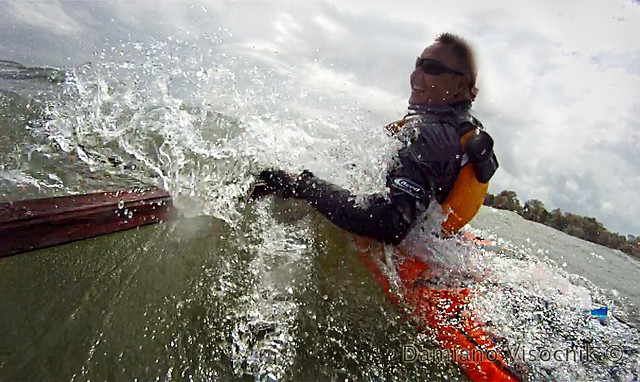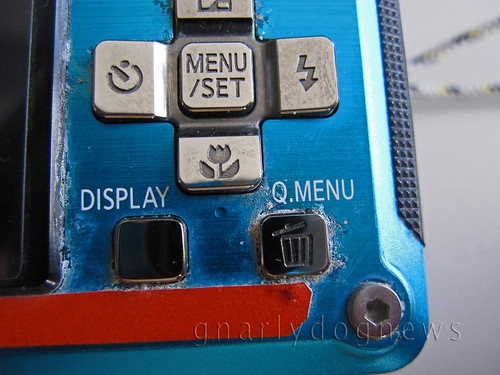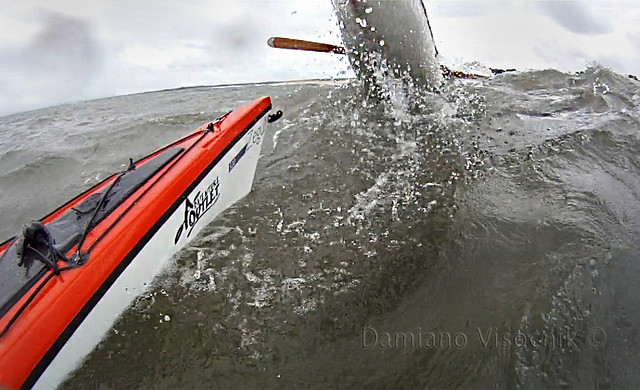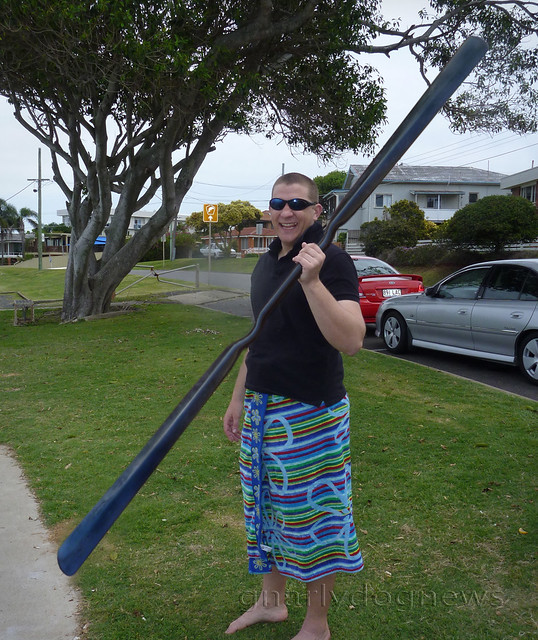Some initial adjustment was necessary to my stroke to gain the maximum benefit from these new tools.
My forward stroke no longer needed to be so high and I had to learn how to cant the Greenland paddle to achieve a quiet and efficient stroke.
Eventually I started to venture into the surf with the traditional paddles and I now find them easier to use than the big bladed Euro.
The biggest difference however came when I started rolling with a skinny paddle.
I was thought the typical CtoC kayak roll where the emphasis is on the blade and much less on kayak rotation to execute the roll.
Only now that I use traditional paddles I can notice the marked difference between a graceful roll and a forced roll.
The revelation came when a very proficient paddler, surf kayaker and roller could not execute a roll when handed one of my Aleut paddles.
Why could he not roll with my paddle when he was so good with his wing paddle?
I could not figure it out at the time but looking back at pictures of my style then and now I see what was happening.
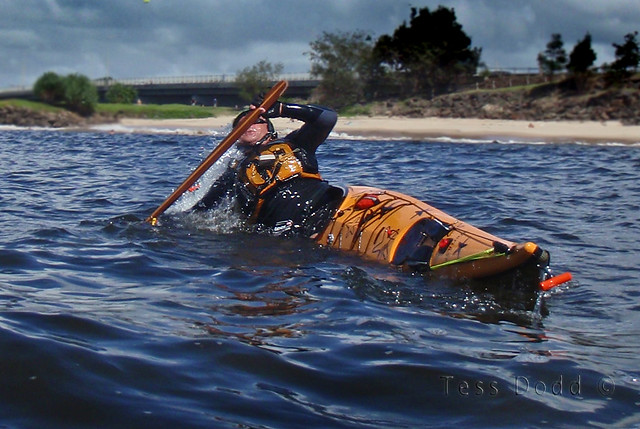
Sea kayak instructors all over Australia teach the explosive white water style roll where momentum and support from the paddle are essential.
Once I started to roll regularly with my new skinny paddles I looked at my rolls (video footage) and noticed a problem: my paddle would end up vertically before the kayak was rolled.
Through mentoring of the selfless dedicated self taught Greenland roller Greg Schwarz I started to correct my poor style and progress into a direction where body pressure on the deck/thigh braces of the kayak is way more important than pressure on the paddle.
Slowly I gained the knowledge and confidence to roll Greenland style. I watched a lot of videos and started to notice that all good rollers executed their rolls with such grace and finesse, never rushing and never forcing their rolls.
Since there is no formally qualified Greenland technique instructor in Australia most rollers are self taught.
While self teaching has great merits often leads to bad habits if one is not referencing his/her style to the one of the masters.
One such master is Helen Wilson. Her style is incredibly graceful.
Her video might not be the most technically produced footage (some of the audio is rather erratic and hard to hear) but her explanation on how to execute Greenland rolls has helped me and my friends to correct some of our mistakes.
Helen Wilson’s video is available in Australia through :
Sydney Harbour Kayaks (NSW)
Blue Earth Paddle Sports (NSW)
Adventure Outlet (QLD)
and Fat Paddler direct for the other states.
I know that there has been resistance from some instructors in embracing the fast growing following of Greenland rolling but I assume that the reason behind is ignorance in the technique.
I have seen several videos lately where local kayakers have started to explore the use of the stick but are having the same problems I had myself: powering those rolls instead of finessing them.
It seems apparent that they are willing to try the stick but have not understood the fundamental difference between a white water roll and a Greenland Roll.
A well executed G roll will not show force or momentum. The emphasys is on controlling and rotating the kayak to come back up, not on the support offered by the paddle.
If a roll with a skinny paddle is marginal in calm waters it certainly will not work in the surf where aerated water will not offer enough resistance on the pressure applied to the paddle.
Some examples of forced rolls using a Greenland paddle:
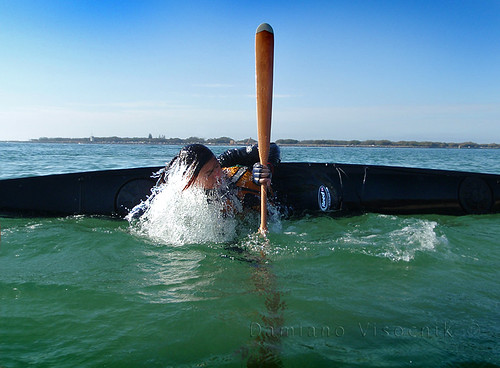
Adventuretess in her early rolling days
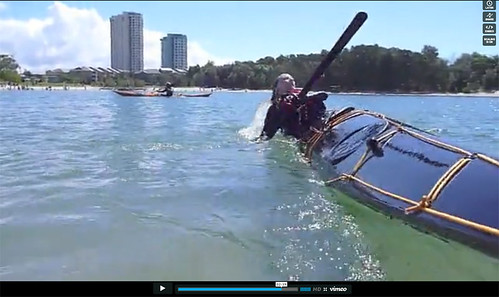
source: Queensland Sea Kayak Club

I am lucky to have a dedicated group of kayakers that mentor each other with rolling and criticize and correct each other’s mistakes with the goal to gain better boat control and overall performance out of our crafts.
And here is Adventuretess a few months ago:
It looks like her style has improved...
PS Gnarlydog and Team are away on safari right now and will return to MEI Headquarter in early May...








